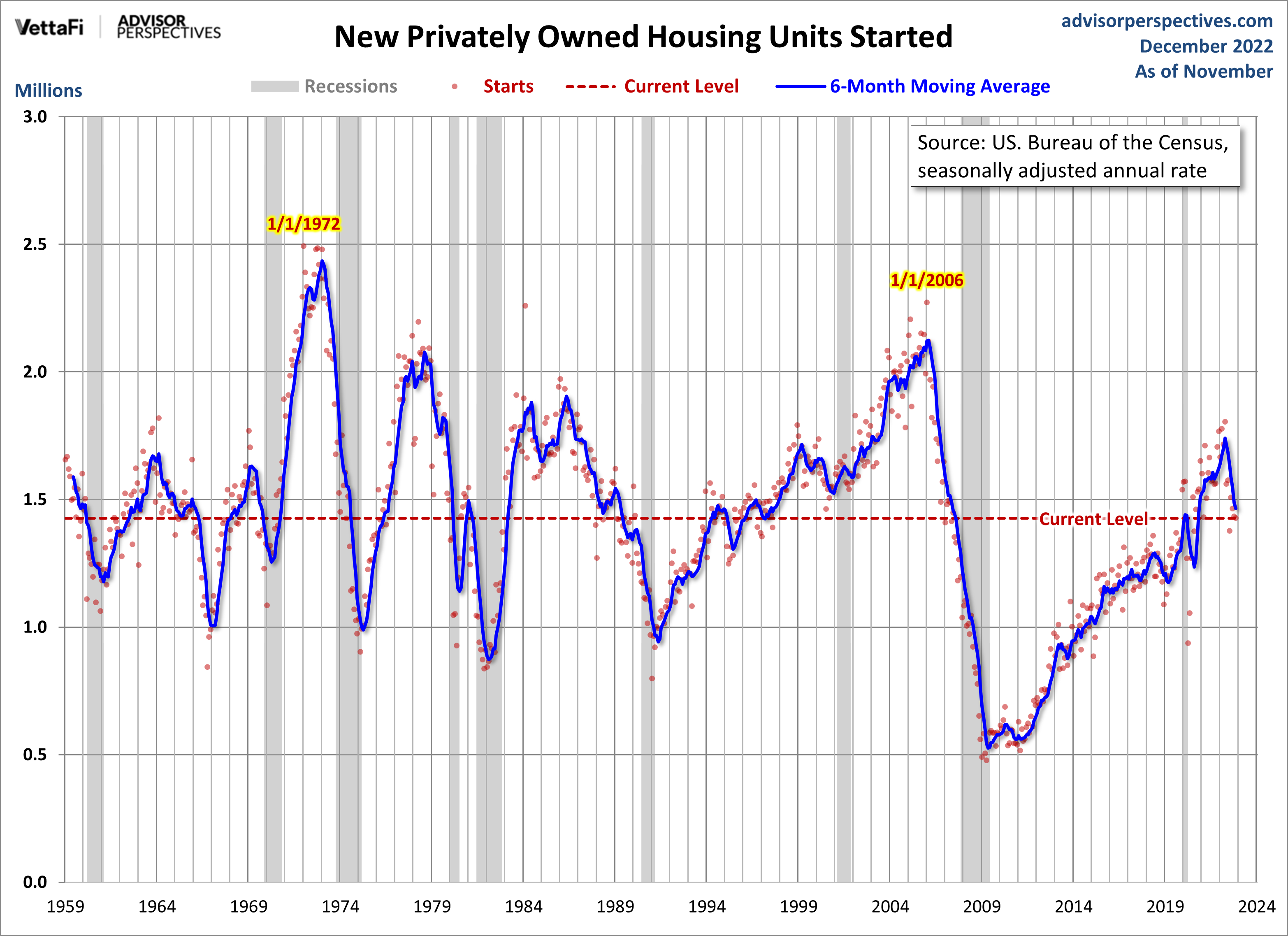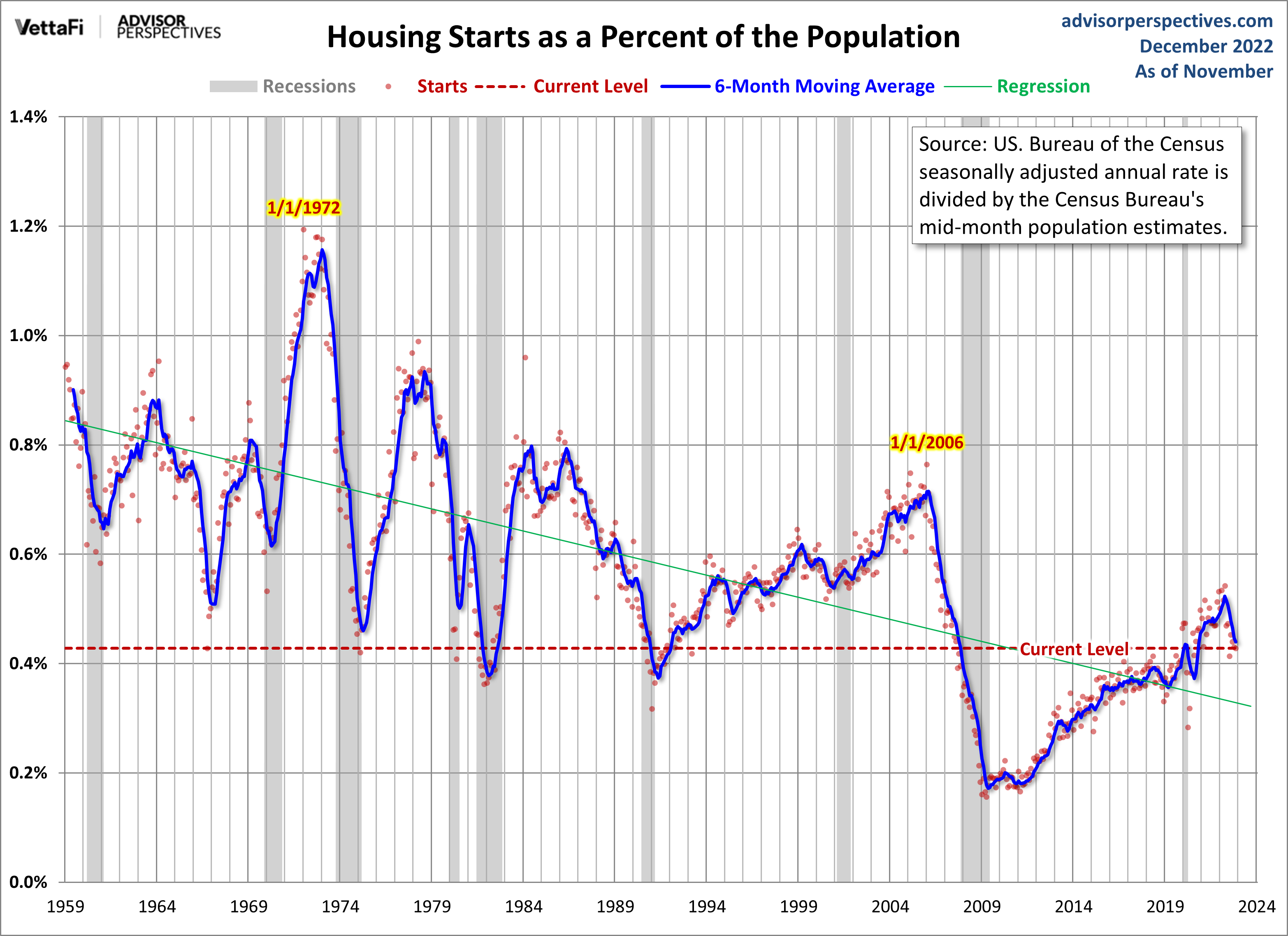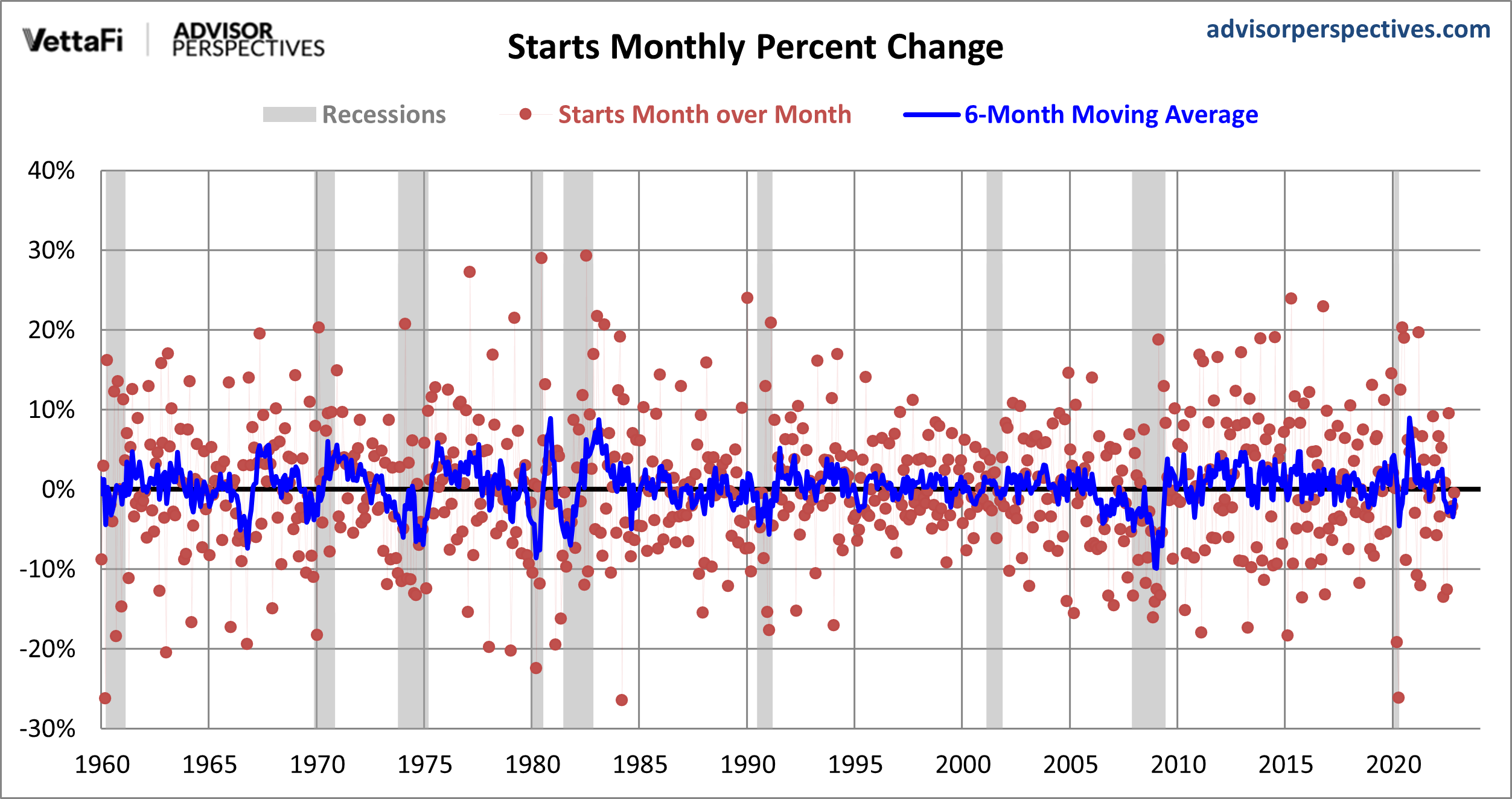New Residential Housing Starts Down 0.5% In November
The U.S. Census Bureau and the Department of Housing and Urban Development have now published their findings for November new residential housing starts. The latest reading of 1.427M was slightly above the Investing.com forecast of 1.400M and is a 0.5% decrease from the previous month's 1.434M.
Here is the opening of this morning's monthly report:
Housing Starts
Privately‐owned housing starts in November were at a seasonally adjusted annual rate of 1,427,000. This is 0.5 percent (±12.3 percent)* below the revised October estimate of 1,434,000 and is 16.4 percent (±13.4 percent) below the November 2021 rate of 1,706,000. Single‐family housing starts in November were at a rate of 828,000; this is 4.1 percent (±11.3 percent)* below the revised October figure of 863,000. The November rate for units in buildings with five units or more was 584,000. [link to report]
Here is the historical series for total privately-owned housing starts, which dates from 1959. Because of the extreme volatility of the monthly data points, a 6-month moving average has been included.

The Population-Adjusted Reality
Here is the data with a simple population adjustment. The Census Bureau's mid-month population estimates show substantial growth in the US population since 1959. Here is a chart of housing starts as a percent of the population. We've added a linear regression through the monthly data to highlight the trend.

A Footnote on Volatility
The extreme volatility of this monthly indicator is the rationale for paying more attention to its 6-month moving average than to its noisy monthly change. Over the complete data series, the absolute MoM average percent change is 6.3%. The MoM range minimum is -26.4% and the maximum is 29.3%.
For visual confirmation of the volatility, here is a snapshot of the monthly percent change since 1990.

More By This Author:
New Residential Building Permits: Down 11.2% In NovemberWorld Markets Update - Monday, Dec. 19
NAHB Housing Market Index:"Builder Confidence Declined Every Month in 2022"



